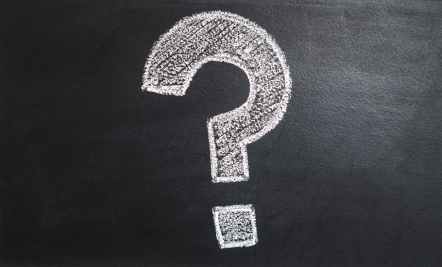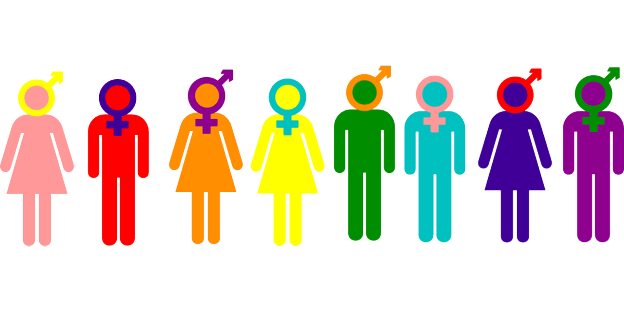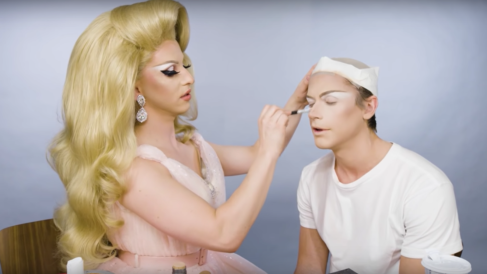I am fortunate to have several friends who were born outside of the United States and moved here to attend college. When chatting with these friends, I often gain new perspectives on American culture through the benefit of an outsider’s view. For example, my friends have pointed out that Americans tend to be obsessed with categorizing their cultural heritage, e.g. identifying as Italian-American if you have one Italian grandparent. More specifically, they are surprised at how Americans inquire about people’s background by asking, “What are you?”
I once went to a bar with some Latin American friends who discussed being shocked the first time an American asked them, “What are you?” One of them explained that he would only ask such a question in Colombia if he was inquiring about the breed of someone’s dog. Otherwise, it would be considered extremely demeaning and dehumanizing.

That conversation comes to my mind whenever the subject of sexual orientation comes up and somebody asks me, “what are you?”
I am a bisexual man who avoided labeling my sexual orientation for many years. I would use the word “bisexual” when I needed to give a simple description of my preferences but I didn’t feel like any term adequately described me. Although I identify more closely with the term these days, I am still uneasy about the practice of categorizing people’s sexual preferences.
Sexual orientation is often viewed like a question on a multiple-choice test:
Option A) Romantic and sexual attraction to your own gender
Option B) Romantic and sexual attraction to another gender
Option C) Both A and B
Option D) Neither

In reality, attraction is an individualized experience that presents itself in dozens (if not hundreds) of possible scenarios such as:
- Non-romantic sexual encounters with females
- Occasional romantic attraction to a limited number of males
- Shared sexual experiences with a male significant-other and a female
Categorizing sexual preference suggests that someone with Sexual Orientation A must be interested in scenarios 1 through 5, Sexual Orientation B must be interested in scenarios 6 through 10, and so on. Some people’s preferences neatly align with these labels. Others, however, check a mixture of boxes that don’t correspond with any specific category.

While writing this blog post, I came across a YouTube video with Miz Cracker putting Queer Eye’s Antoni Porowski into drag. During the process (from 3:40 to 6:25), the two have a refreshingly honest conversation about the challenges of fitting oneself into the box of a generally-accepted sexual orientation. I could definitely relate to Porowski’s reluctance to self-label and Cracker reaching a point where she doesn’t care how she is labeled.
In recent years, the terms ambisexual, pansexual, and fluid have joined the common vernacular. Adding these labels creates a more inclusive view of sexual orientation, but it also perpetuates the system of trying to capture a complex human experience in a single word. Once a label is applied, it creates two serious problems:
- Arguments of Definition. Any label is subjective, meaning different things to different people. This creates discussions of whether someone is “really” straight/gay/bi/etc., which invalidates that person’s preferences.
- Self-Limitation. Once someone adopts a label, they will be less likely to discuss or explore their preferences that fall outside of that label.
Unfortunately, people who choose not to categorize their sexual orientation aren’t given the same respect and validity as those who self-label. Undefined people get called “curious,” “confused,” and “undecided” just as much as bisexuals, if not more. If someone is unsure of how to label their orientation, however, it does not mean they are unsure of what their preferences are.

This discussion begs the question of why we label sexual orientation in the first place. Some would say that it is necessary for practical reasons, but I would argue otherwise. Consider the following two discussions:
“There’s a new series on Netflix called The Haunting of Hill House. Do you want to watch it with me?”
“What kind of show is it?”
“Horror.”
~OR~
“There’s a new series on Netflix called The Haunting of Hill House. Do you want to watch it with me?”
“What’s it about?”
“A family that grew up together in a haunted house and how each of them deals with the trauma once they get older.”
Which is a more effective way to communicate?

I am not proposing that we stop talking about sexual orientation. Rather, I am suggesting that we discuss it by using descriptions and dialogue instead of labels and categories. If you want to get to know someone, seek more than a one-word answer. If someone declines to label themself, don’t choose a label for them. If you hear someone invalidating a person’s sexual orientation, raise a red flag and speak up. And if someone asks what I am… tell them I’m Karl.
Karl Ericson is a “30-something” bisexual man who lives and works on the east side of Cleveland. When he isn’t working long hours or sending snarky text messages to GayInTheCLE’s host blogger, he enjoys hiking, traveling, and vegetarian cooking.


This makes me think of the one and only time I tried to come out to my mom. I love her to death but she is of the opinion that you are either gay or straight. There is nothing in between. It hurt so badly to be told that my attraction to men was invalid because I also like women… and now, other genders. We really do have to stop using these lables as a definative explaination for a living person.
LikeLike
I am sorry that your mother wasn’t more understanding. Labels are a hard thing to get away from, especially in western culture. We are taught we need definition and places to fit in, if we don’t then we are told we are odd and strange. The world and people are slow to catch up and change, but there are those who have and it is those we should surround ourselves with.
LikeLiked by 1 person